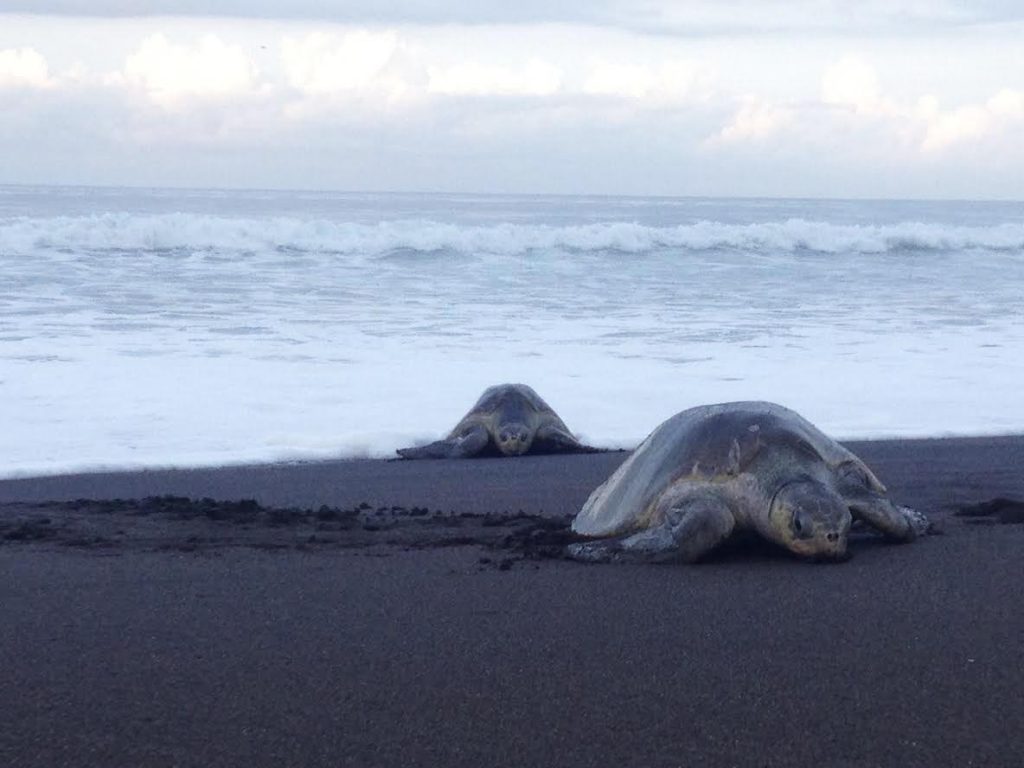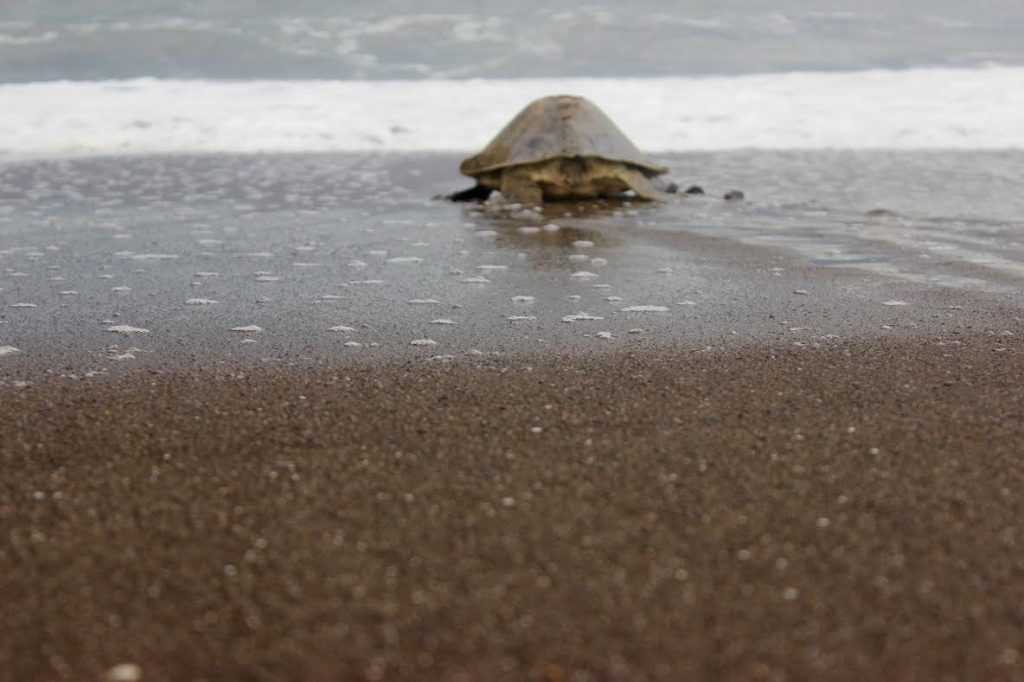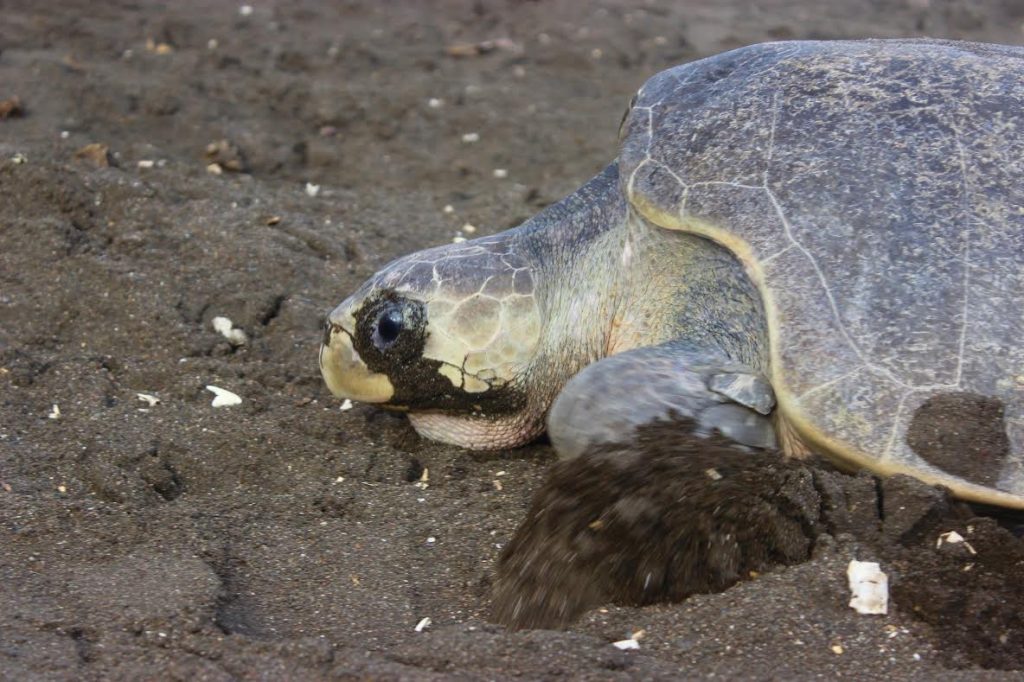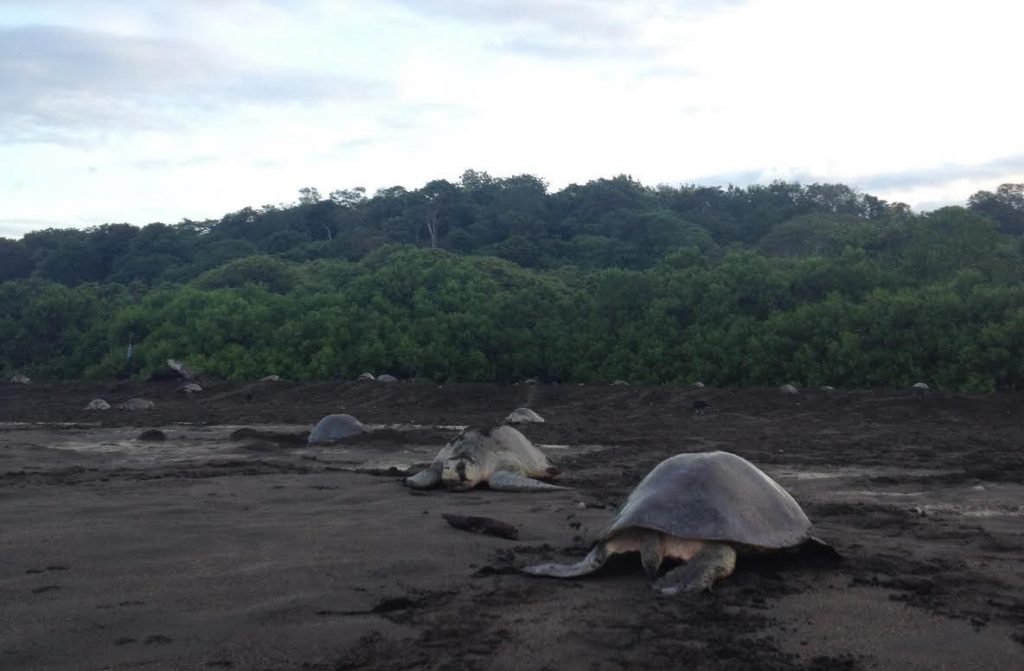
On a walk along the beach at dawn, the faint outline of hundreds of sea turtles comes into view. The turtles drag their heavy bodies up the sand, dig nests, lay eggs, and then return to the sea. This is the beginning of the arribada.
An arribada, which is Spanish for arrival, is the mass nesting of hundreds to hundreds of thousands of sea turtles. There are only two species of sea turtles that synchronize their nesting en masse – Olive Ridley and the endangered Kemp’s Ridley Sea Turtles.

Kemp’s Ridley Sea Turtles mostly nest along the Gulf Coast of Mexico between April and August, while Olive Ridley Sea Turtles nest year round on the Pacific side of Costa Rica near a small town in Guanacaste province called Ostional. Because the arribadas are year-round occurrences in Ostional, the town has developed great ecologic and economic significance within Costa Rica’s eco-tourism industry.
The largest arribadas usually take place during the peak of Costa Rica’s rainy season from August to December. Turtles will come one to two times a month depending on the moon’s cycle to lay their eggs. Approximately ten days before the new moon, the turtles congregate in a flotilla offshore just past the breaking waves. After a few days, the arribada begin on the darkest nights between 8 p.m. and 4 a.m. Over the course of three to seven days the as many as 150,000 turtles lay up to ten million white soft-shelled, pingpong ball-sized eggs. The largest recorded arribada in Costa Rica’s history took place in November 1995 where over 500,000 turtles came ashore.

Between 45 – 54 days later, the baby sea turtles will hatch. Once they make their way out of the sand, the baby turtles already know which direction to head towards the ocean. In Ostional, women and children from the community accompany the hatchlings to the water, protecting them from predators on land. However, once they reach they will encounter other dangers in the forms of other animals, pollution, and climate change. Most baby turtles don’t survive to maturity (10 – 15 years) but those who do will return to Ostional to lay their eggs.
On top of being one of the most important nesting beaches for turtles, Ostional also has great cultural and economic importance in Costa Rica. In 1982, Ostional was declared a protected area. Two years later, the Ostional Wildlife Refuge was officially created to increase efforts to protect the turtles. Over time, the protected area has increased from its original 200m to the three mile area that it is today.

In 1987, the government of Costa Rica began allowing the community of Ostional to harvest eggs on the first three days of an arribada. In return, the villagers protect the turtles, clean and patrol the beaches day and night to keep away poachers and scavengers like dogs, pigs and vultures. This is monitored by the Ostional Integral Development Association (ADIO) which is authorized and supervised by Costa Rica’s Energy and Environment Ministry (MINAE). Ostional is the only place in the world to legally permit the harvest and sale of sea turtle eggs.
While it may seem counterintuitive to harvest eggs as a method of conservation, scientists have discovered that eggs laid on the first few nights of an arribada are usually destroyed by the next wave of turtles coming ashore and high tides. Scientists also found that if the destroyed eggs were not excavated, they could contaminate healthy eggs laid by turtles after the arribada. Allowing the locals to harvest the first clutches of eggs and sell at a fair market price actually results in more successful hatchings, and weakens the demand for illegal eggs on the black market. Thirty percent of the income from egg harvesting goes back to ADIO to pay the guards who patrol the nests and to invest in continued research on the sea turtle population. Therefore, the harvesting not only leads to more and healthier sea turtle hatchlings, but also contributes to the economic and social development of the community.

Since there are turtles nesting year round at Ostional, tourists are often able to see turtle nestings and hatchling releases in one visit. Turtle conservation and research groups in Ostional hope that witnessing these phenomena make for educational experiences that inspire people to play a more active role in conservation.
Many of our students here at Outward Bound work with the sea turtle populations in Costa Rica and Panama. Interested in seeing these turtles for yourself? Check out our Sea Turtle Retreat Girl Scout Destination, Scuba & Sea Turtle Adventure Girl Scout Destination and Caribbean Scuba & Service Summer Expedition.